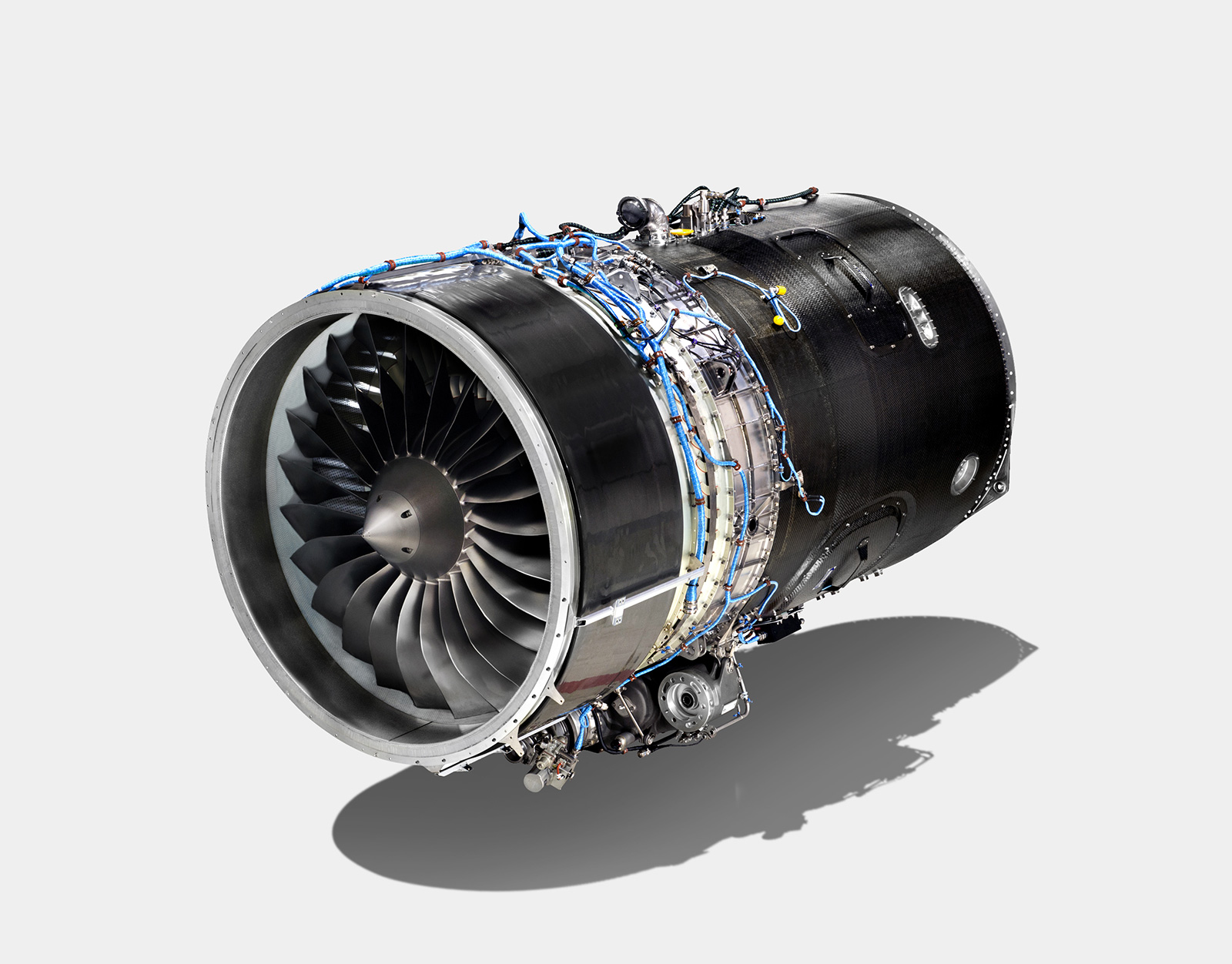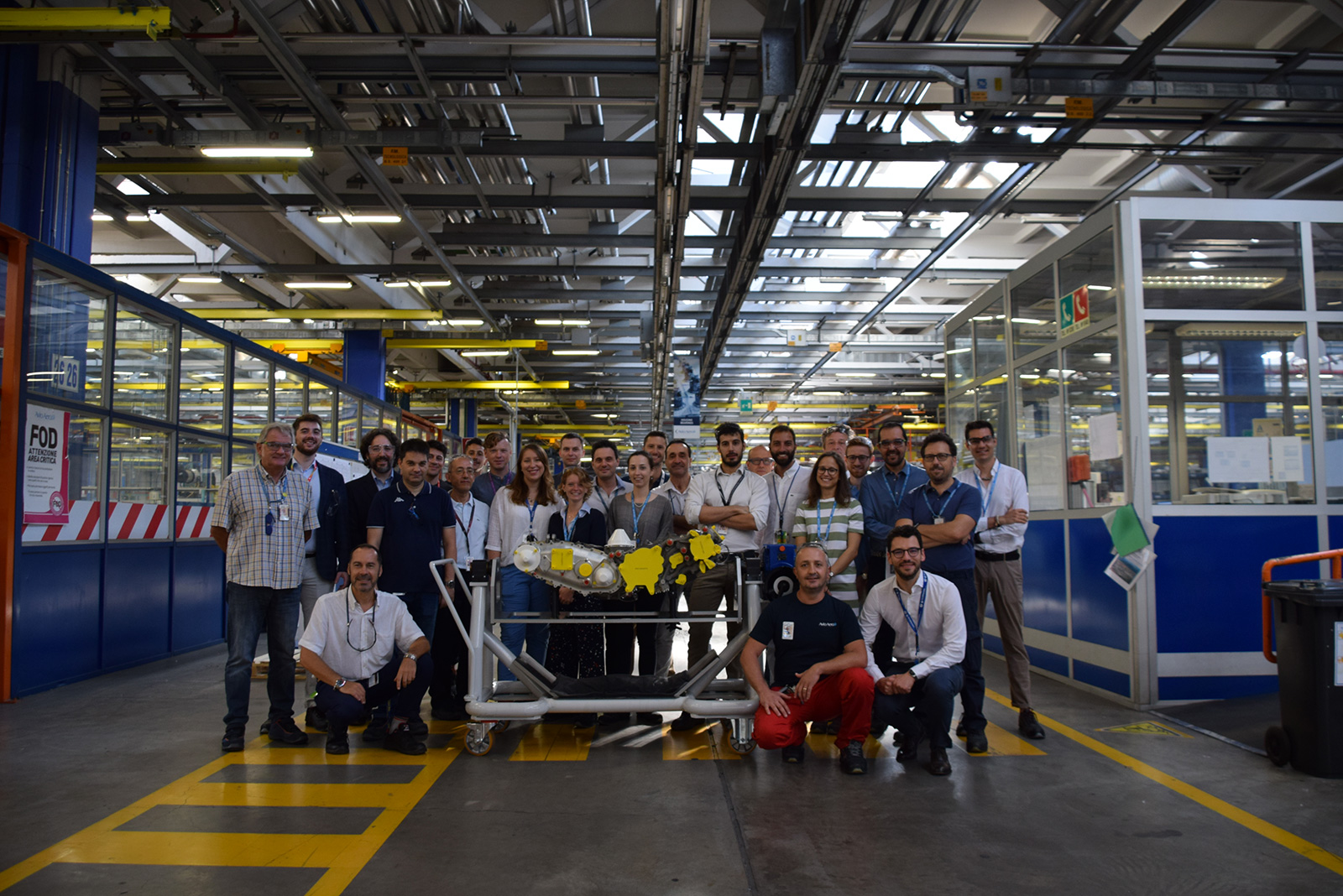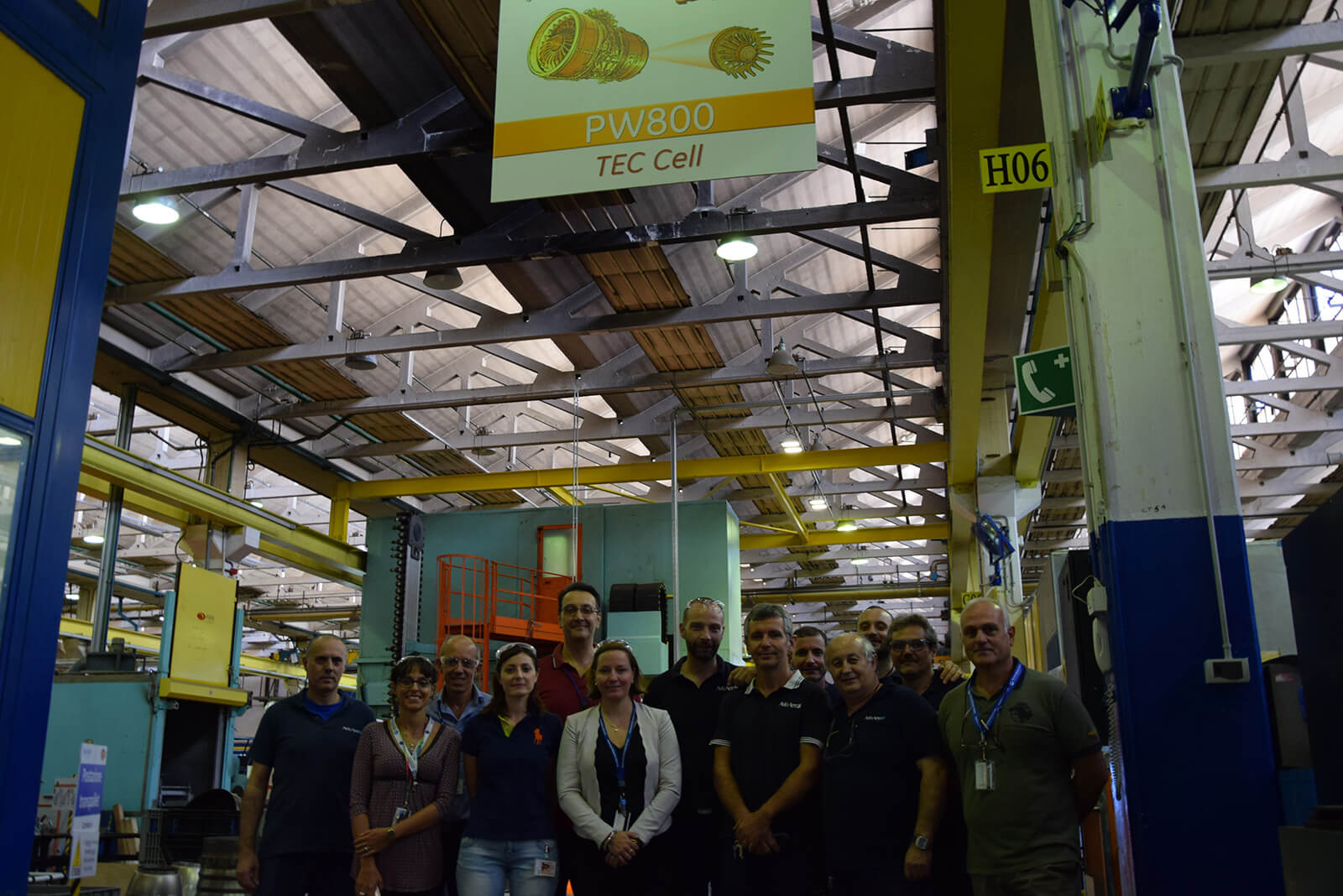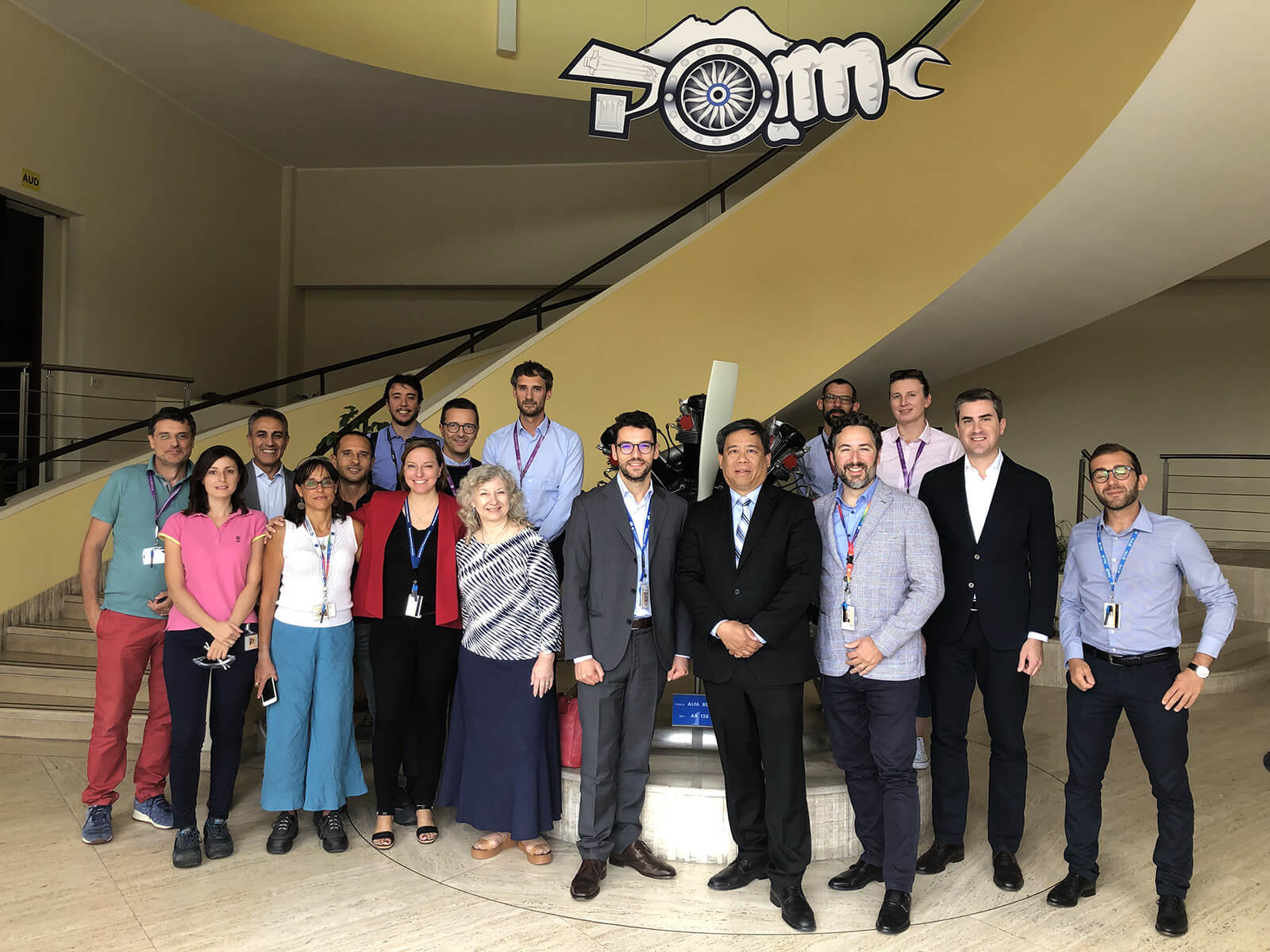Aviation
Hi-tech propulsion
Avio Aero technology for a number of engine components in the PW800 family by Pratt & Whitney Canada offers even greater innovation on board the latest generation jets.
Oct 2019
The exemplary collaboration between Avio Aero and Pratt & Whitney Canada has been continuing for almost 40 years and is based on the most renowned engine components by the Italian brand: namely transmissions, turbines and combustors that have contributed to the success of the famous turboprop engines as well as the jet engines built by the Canadian company.
The regional or private jet engines have recently attracted a great deal of interest for their advanced technological content: the PW800 engine family. Here, we are talking about the PW814, which powers the Gulfstream G500, the PW815 which is on the G600 and the brand new PW812-D that powers the newly released Falcon 6X from Dassault Aviation. This latter starts service in 2022, although it has long attracted the attention of connoisseurs and enthusiasts.
These aircraft are capable of impressive performance: they range from 29 meters long (the Gulfstream G600) to 26 meters (the Falcon 6X) and can accommodate about twenty passengers; with cabins that can be easily configured and have a high rate of digitization at the control panel. Moreover, all these planes are able to cover significant distances, from 5,000 to 6,500 nautical miles: which means flying from Cape Town to Hong Kong, or from Tokyo to London, non-stop. They can do this by flying at 51,000 feet (about 15,500 meters), generating thrust power that at times is greater than that of airliners (up to 14,000 pounds) and even reaching speeds close to Mach1 ( the G600). This is thanks to the powerful engines.
The PW812D is the newest engine of the PW800 family and will be powering the Dassault Aviation's Falcon 6X jet aircraft.
The PW800 family - which has accumulated more than 12,000 hours of in-flight operation - has always been the reference engine for these exquisite, fast-paced, sky limousines. While the PW812 is the most compact and powerful of the new features that will be fitted to the Falcon 6X, its predecessors, the PW814 and 815 are a guarantee of the performance of their Avio Aero components. These are the accessory drive train (AGB), for on-board power generation, and the Turbine Exhaust Case (TEC), the exhaust nozzle at the end of the turbine where the thrust of a jet engine is completed, with a very attractive design.
"Our AGBs on the 814 and 815 models are highly compact and designed for employing a high level of integration with the engine oil system," says Roberto Chiurchi, Engineering Manager at Avio Aero for these programs. "So the design and layout of the parts is optimized in the architecture, with the air-oil separator and oil tank integrated into the main structure and also with the advantage of having additive parts inside. On the latest engine design, PW812-D, we worked closely with Pratt & Whitney Canada Engineering, building on the PW800 design legacy, to achieve the best performance and reliability."
The success of the engineering collaboration with the engine manufacturer is the result of the effort of Avio Aero teams working in four different locations. Although the PW812-D version is smaller in size, it does not involve less technological innovations or design challenges. In fact, in addition to the additive technology in the TEC, its transmission was "developed in record time (only 13 months), as well as produced in such a way as to be able to undergo flight tests right from the start, i.e. on the first FETT (First Engine To Test) engine," adds Umberto Menegaldo, who, as is typical for the company, also worked in the factory with the transmission and gear team at the Rivalta di Torino plant.
Additionally, the PW812-D transmission is the first module entirely designed by the talented team at the Avio Aero headquarters in Bielsko Biala, Poland. "Our team working for the PW800 family consists of about 20 people," says Adam Zachura, Sub Section Manager at Avio Aero Polska. Zachura's team benefits from long experience in transmissions and static and rotating parts, and on the valuable collaboration of the CTH (Controlled Title Holders): real certified experts such as Marcin Zur, Janusz Trond and Dorota Kopkowicz.
In addition to Rivalta, the Borgaretto plant produces the structural transmission casings for the three versions of the engine. The TEC modules - designed and developed at the engineering center of Bielsko Biala and Pomigliano d'Arco- is currently produced at the centre of excellence in Campania, at near distance to the Vesuvius vulcan.
"The TEC parts designed and manufactured in additive manufacturing, contribute to the engine efficiency by reducing noise emissions and fuel consumption thanks, above all, to the introduction of structural elements with high-performance aerodynamic geometries. These solutions reduce the number of parts and significantly improve weight," explains Sasha Catalini, Technical Leader at Avio Aero in Pomigliano. "For example, for this version of the PW812-D, we have reduced the part count from four sheet metal components to a single 3D printed part. And, not to mention, the simplification of joints and assemblies to remove the stresses and loads induced on the module."
The TEC has collected over 1000 hours of bench testing, and the engineering work has resulted in an innovative design with significant structural benefits. "The TEC design integrates TRF (Turbine Rear Frame) with the Mixer. And I would also like to point out that these results have been achieved thanks to extraordinary teamwork, with a significant women presence in our team, including legal team (an aspect that I personally appreciate)."
Finally, the Avio Aero products for these formidable engines profit from the experience of international teams located in four different locations, as highlighted by the team leading the PW812-D, PW814 and PW815 programs in Avio Aero with the customer. "It is so exciting to work on these products. The technology in these components is truly outstanding " say Stefano Dolcini and Luigi Piervirgili, Program Managers at Avio Aero. "We always wonder what our engineers will invent next!"








